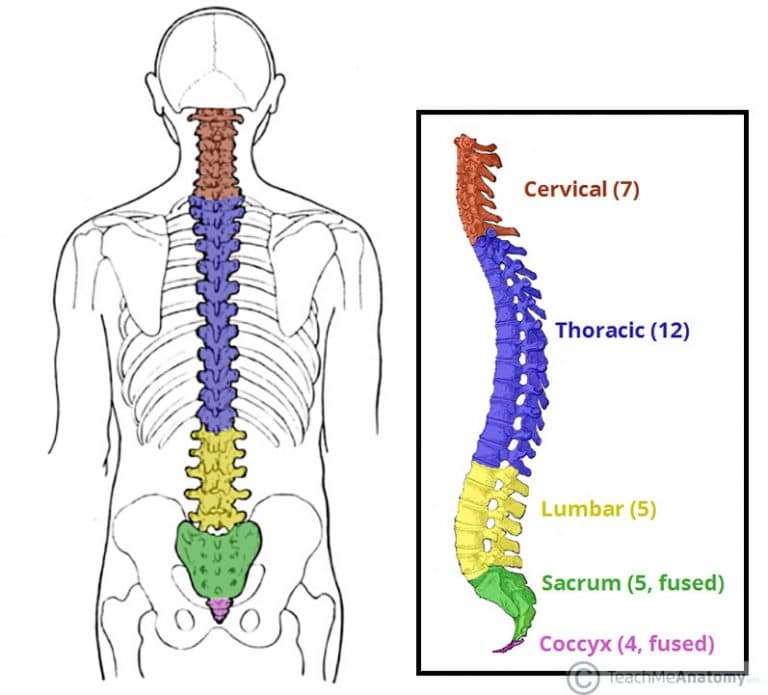
The secondary centres on the tips of the transverse and spinous processes contribute to the length of these. Individual primary centres start to ossify at different ages, but in general terms, ossification starts in the latter half of the embryonic period and the centres begin to fuse around the time of birth.ĭuring puberty, five secondary ossification centres develop in each vertebra. Occasionally the two neural arch centres do not fuse in the midline, which is known as an unfused spinous process. The neurocentral joint is where these ossification centres meet in the posterior vertebral body. lumbar spine (5 vertebrae) are the biggest and strongest, with the least movementĮach vertebra forms in the embryo around the notochord from three primary ossification centres: an anterior midline centrum which forms most of the vertebral body and two bilateral posterolateral centres which form the two halves of the neural arch and the portion of the vertebral body posterior to the costal elements.


bilateral transverse processes project posterolaterally from where the pedicles and laminae fuse.Seven processes arise from the neural arch, that provides articular support and attachments for ligaments and muscles: the laminae are bilateral, flattened plates that extend posteromedially from the posterior margin of the pedicles, to meet in the midline forming the posterior wall of the vertebral foramen.The superior and inferior margins of each pedicle are slightly curved and form the vertebral notches, which when an adjacent vertebra is joined, create the intervertebral (or neural) foramina which transmit the nerve roots and associated vessels They join with the lateral aspects of the laminae posteriorly. the pedicles which are short, thick bilateral processes that protrude posteriorly from the posterolateral corner of the vertebral body forming the lateral walls of the vertebral foramen.The neural arch is comprised of the bone posterior to the vertebral body which has several individual components that are fused to form a ring (the vertebral foramen) that encloses the spinal canal.


Each vertebra articulates with the vertebrae above and below it via an intervertebral disc. The size of the vertebral bodies increases down the spine as the size and weight of the body it has to support above it increase. The vertebral body is the large anterior cylindrical portion that is predominantly responsible for bearing the weight of the spine and body above it. These basic characteristics vary depending on the function of each individual vertebra. Vertebrae, apart from those that are atypical, have a similar basic structure which can be described as an anterior vertebral body and a posterior neural (or vertebral) arch.


 0 kommentar(er)
0 kommentar(er)
